Creation of Adam in the Qur’an: Scientific Insights from Genetics & Anthropology
The creation of Adam in the Qur’an is described as a divine act — forming the first human from clay and breathing into him the spirit. But how does this sacred narrative align with modern anthropology and genetics?
As science uncovers the complex history of human evolution, Muslims around the world are asking: Can faith and science tell the same story? Is there harmony between the Qur’anic verses and what genetic research reveals about our origins?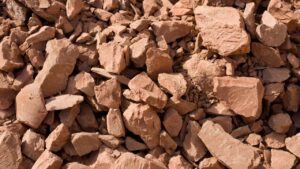
This article explores the intersection of scripture and science, comparing the Qur’an’s description of human creation with findings in human biology, evolutionary theory, and fossil anthropology.
Let’s begin this journey from revelation to research, uncovering what it means to be human — in both the divine and scientific sense.
📖 Verses on the Creation of Adam in the Qur’an
The creation of Adam in the Qur’an is described across several powerful verses, revealing how Allah shaped the first human from clay, initiated development from a drop of fluid, and honored humanity by breathing into him the divine spirit. These verses lay the foundation for both Adam and human creation in Islamic theology.
🧱 Surah Al-Hijr (15:26)
وَلَقَدْ خَلَقْنَا ٱلْإِنسَٰنَ مِن صَلْصَٰلٍۢ مِّنْ حَمَإٍۢ مَّسْنُونٍۢ
“Indeed, We created man from sounding clay molded from black mud.”
🧬 Surah Al-Mu’minun (23:12–14)
وَلَقَدْ خَلَقْنَا ٱلْإِنسَٰنَ مِن سُلَٰلَةٍۢ مِّن طِينٍۢ ﴿١٢﴾
ثُمَّ جَعَلْنَـٰهُ نُطْفَةًۭ فِى قَرَارٍۢ مَّكِينٍۢ ﴿١٣﴾
ثُمَّ خَلَقْنَا ٱلنُّطْفَةَ عَلَقَةًۭ فَخَلَقْنَا ٱلْعَلَقَةَ مُضْغَةًۭ فَخَلَقْنَا ٱلْمُضْغَةَ عِظَـٰمًۭا فَكَسَوْنَا ٱلْعِظَـٰمَ لَحْمًۭا ێ ثُمَّ أَنشَأْنَـٰهُ خَلْقًا ءَاخَرَ ۚ فَتَبَارَكَ ٱللَّهُ أَحْسَنُ ٱلْخَـٰلِقِينَ ﴿١٤﴾
“We created man from an extract of clay. Then We placed him as a drop of fluid in a secure place. Then We developed the drop into a clinging clot, then into a lump, then formed bones and clothed the bones with flesh. Then We made him into another creation. So blessed is Allah, the best of creators.”
💨 Surah Sad (38:71–72)
إِذْ قَالَ رَبُّكَ لِلْمَلَـٰٓئِكَةِ إِنِّى خَـٰلِقٌۭۢ بَشَرًۭا مِّن طِينٍۢ ﴿٧١﴾
فَإِذَا سَوَّيْتُهُۥ وَنَفَخْتُ فِيهِ مِن رُّوحِى فَقَعُوا۟ لَهُۥ سَـٰجِدِينَ ﴿٧٢﴾
“When your Lord said to the angels, ‘I am creating a human being from clay. When I have fashioned him and breathed My spirit into him, then fall down in prostration to him.’”
These verses show that the Qur’an provides both a spiritual framework and a biological blueprint of human development — from earthly origin to divine inspiration.
Clay: Symbolic or Scientific?
In several Qur’anic verses, the origin of mankind is described as being from clay — a humble yet profound substance. But is this reference merely symbolic, or does it have scientific depth?
Modern science confirms that the human body contains the same essential elements found in natural clay, including magnesium, calcium, iron, potassium, and phosphorus. These minerals are critical for bone formation, muscle contraction, blood circulation, and cellular health.
In the field of origin-of-life research, scientists have discovered that specific types of clay, such as montmorillonite clay, may have provided a stable surface for the assembly of amino acids and early RNA chains — molecules essential for life. This gives new relevance to the Qur’anic symbolism, showing how clay and human creation intersect in both revelation and research.
This remarkable overlap suggests that the mention of clay in the Qur’an is not just metaphorical — it holds scientific truth. The Qur’an connects our spiritual identity with our material origins, portraying a unified view of life’s creation.
The concept of clay and human creation beautifully bridges the gap between ancient scripture and modern science, offering a profound perspective on who we are — both physically and spiritually.
🧬 Human Embryology in the Qur’an
One of the most remarkable aspects of human creation in Islam is the Qur’an’s description of embryonic development — revealed over 1400 years ago, long before the invention of microscopes or modern anatomy.
In Surah Al-Mu’minun (23:13–14), the Qur’an outlines the stages of prenatal development:
ثُمَّ جَعَلْنَـٰهُ نُطْفَةًۭ فِى قَرَارٍۢ مَّكِينٍۢ ﴿١٣﴾
ثُمَّ خَلَقْنَا ٱلنُّطْفَةَ عَلَقَةًۭ فَخَلَقْنَا ٱلْعَلَقَةَ مُضْغَةًۭ فَخَلَقْنَا ٱلْمُضْغَةَ عِظَـٰمًۭا فَكَسَوْنَا ٱلْعِظَـٰمَ لَحْمًۭا ێ ثُمَّ أَنشَأْنَـٰهُ خَلْقًۭا ءَاخَرَ ۚ فَتَبَارَكَ ٱللَّهُ أَحْسَنُ ٱلْخَـٰلِقِينَ ﴿١٤﴾
“Then We placed him as a drop of fluid (nutfah) in a firm lodging. Then We made the drop into a clinging clot (alaqah), and We made the clot into a lump (mudghah); then We made the lump into bones (ʿiẓām), and We clothed the bones with flesh (laḥm). Then We developed him into another creation. So blessed is Allah, the best of creators.”
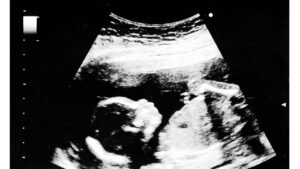
These stages — nutfah, alaqah, mudghah, bones, and flesh — are strikingly similar to what modern science describes as the zygote, implantation stage, somite formation, and musculoskeletal development.
It’s important to note that these stages were completely unknown during the Prophet’s time. The accuracy of this embryological sequence continues to astonish scientists and embryologists, leading many to explore the connection between Islam and scientific knowledge.
In the context of human creation in Islam, the Qur’an offers not only spiritual guidance but also astonishing alignment with scientific discovery — once again bridging faith and reason.
🧠 Anthropology and the Evolution Debate
Anthropology is the scientific study of human beings — our physical evolution, cultural development, and ancient ancestry. One of its key aims is to trace the origin of humans through fossils, genetics, and comparative anatomy.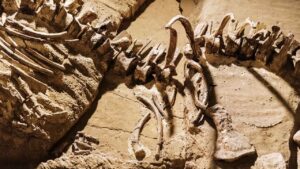
In the field of evolutionary biology, the prevailing theory is that humans share a common ancestor with other primates. Over millions of years, gradual changes in DNA and anatomy led to the emergence of Homo sapiens — modern humans. This is a major area of discussion when it comes to anthropology and Islam.
But what does the Qur’an say about human origins? Islamic teachings hold that the first human, Prophet Adam (عليه السلام), was created directly by Allah from clay — without parents or predecessors. This raises a central theological question: Did Adam have ancestors?
Islamic scholars have debated this question. Some adopt a literal interpretation: that Adam was the very first human being, created uniquely without evolutionary lineage. Others suggest a metaphorical approach, viewing the Qur’anic language as spiritual and symbolic, possibly allowing room for the scientific model of biological evolution.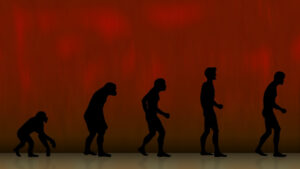
While there is no unified stance, many scholars emphasize that belief in Adam’s creation does not require denial of observable scientific patterns in other species. The core belief remains: Adam’s creation was a special act of God, and our human dignity and purpose are divinely rooted.
By exploring both sides — the scientific view of anthropology and human evolution, and the theological view from Islamic tradition — we can better understand the dialogue between faith and modern science on the topic of human origins in the Qur’an.
🧬 Genetics & the Story of One Ancestor
Recent advancements in genetic research have uncovered the existence of what scientists refer to as “Mitochondrial Eve” and “Y-chromosomal Adam” — individuals whose DNA markers are found in all living humans today. These figures represent the most recent common ancestors in the maternal and paternal lineages, respectively.
While not the only humans alive at their time, these genetic markers support the idea that modern humans are genetically connected to a single origin — aligning with the Qur’anic concept of Adam (عليه السلام) as the first human created by Allah. This opens up a fascinating conversation about the relationship between Adam and genetics.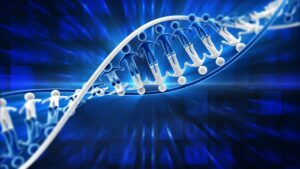
The Y chromosome is passed down from father to son, while mitochondrial DNA is passed from mother to all offspring. By analyzing mutations and inheritance patterns, scientists have traced these back to individuals who lived tens of thousands of years ago. This does not contradict religious belief if we understand the Qur’anic narrative as emphasizing Adam’s special creation while allowing for broader human diversity.
From the Qur’an’s perspective, all human beings are part of one family: “O mankind, We created you from a male and a female…” (Surah Al-Hujurat 49:13). This affirms both the oneness of humanity and the beauty of genetic variation and inheritance.
When we study genetics through the lens of revelation, we find that the Qur’anic view on human origins and modern discoveries can complement rather than contradict each other — offering a fuller picture of our biological and spiritual journey.
📚 Scholarly Views: Interpreting the Intersection
Islamic scholarship has long explored the origins of human life through the lens of the Qur’an. Renowned classical commentators like Ibn Kathir and Al-Tabari interpreted verses about Adam’s creation literally — as a miraculous act without evolutionary stages.
Ibn Kathir wrote: “Allah created Adam from dust, then clay, then sounding clay… This was a direct act of creation, not through lineage.”
Al-Tabari commented: “The origin of mankind is the soil of the earth. The Qur’anic statement is clear on the stages — from clay to flesh — as real, not metaphorical.”
However, in the modern era, some contemporary scholars offer expanded views to accommodate discoveries in evolution, fossil records, and genetic science.
Dr. Yasir Qadhi stated: “While I affirm the special creation of Adam, I also acknowledge that the Qur’an is not a biology textbook. We must be open to discussions that do not compromise clear theological boundaries.”
Javed Ahmad Ghamidi noted: “The Qur’an speaks to the spirit, not the body. It is entirely possible that Adam was the first moral human — chosen by God, regardless of biological ancestry.”
Islam encourages the use of reason and reflection. The Qur’an says, “Do they not reflect upon themselves?” (Qur’an 30:8). This promotes a sincere pursuit of knowledge through both revelation and scientific inquiry.
Ultimately, whether one holds a literal or metaphorical view, the discussion of Islam and modern science remains open and evolving. What unites all perspectives is the belief that Islamic teachings value truth, reason, and the dignity of human life.
🕊️ Faith and Science in Harmony
The Qur’an invites humanity to ponder the mysteries of creation — not just with the heart, but with the mind. It encourages observation of the heavens and the earth, of the self and of history. This spirit of inquiry fuels both Islamic theology and scientific discovery.
While the Qur’an emphasizes the divine origin of Adam, science explores the genetic pathways and evolutionary evidence behind human existence. These are not necessarily in contradiction — they can be seen as two lenses viewing the same reality: one spiritual, one physical.
Islam has historically thrived during periods of intellectual openness, where scholars like Ibn Sina, Al-Ghazali, and Ibn Rushd embraced both revelation and rational thought. The modern Muslim has the same responsibility — to seek knowledge without fear, and to view faith and reason as allies, not enemies.
Ultimately, belief in the creation of Adam and the scientific study of human origins need not be opposites. They can coexist as parts of a larger truth. In this harmony lies the power of Islam — a religion grounded in reflection, revelation, and reason.
Let us explore, reflect, and believe — with hearts open and minds awake.
❓ Frequently Asked Questions (FAQ)
🧠 Q: What does the Qur’an say about human creation?
The Qur’an describes human creation</span as a miraculous process beginning from clay. Allah shaped Adam and breathed His spirit</span into him, giving rise to the first human. This emphasizes the spiritual dignity and unique role of mankind.
🔬 Q: Is the creation of Adam from clay scientifically possible?
Modern science has shown that clay contains essential minerals</span like magnesium, calcium, and iron — all found in the human body. Some studies in origin-of-life research suggest clay may have helped form early RNA structures, aligning with the Qur’an’s symbolism.
🧬 Q: Does Islam support human evolution?
Islamic scholars differ</span in interpretation. Some adopt a literal view of Adam’s creation, while others explore metaphorical meanings that may accommodate evolutionary science. Islam encourages reflection, so diverse views coexist within the faith.
👤 Q: Who was the first human according to Islam?
According to the Qur’an, the first human was Prophet Adam (عليه السلام). He was created directly by Allah from clay, without parents or predecessors, and was honored as the first messenger and father of humanity.
📚 References & Sources
This section includes both Islamic scholarly sources and scientific studies that support the understanding of Adam’s creation in the Qur’an and its alignment with modern science.
- 📖 Qur’an (Verses on Human Creation) – Quran.com
- 📘 Tafsir Ibn Kathir – Surah Al-Mu’minun (23:12–14)
- 🧾 Tafsir Al-Tabari – Classical Qur’anic Commentary
- 🧬 Nature Journal – Mitochondrial Eve and Y-Chromosomal Adam
- 🧪 PubMed – Clay Minerals and Prebiotic Chemistry
- 🔬 LiveScience – Human Evolution & Fossil Record
- 🌍 National Geographic – Human Origins & Evolution
- 🏛 Smithsonian Institute – Human Family Tree & Anthropology
- 🔍 ScienceDirect – Mineral Composition: Human Body vs Earth Clay
- 🧠 Templeton Foundation – Science & Religion Dialogue
- 📚 Cambridge Muslim College – Islam & Science Lectures
